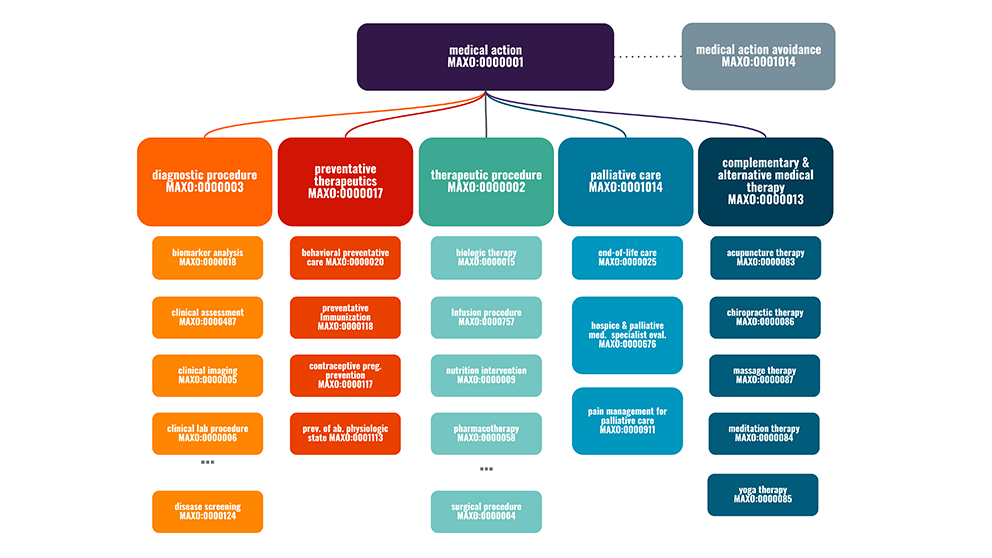
Ontologies capture a set of categories in a subject area and formally structure them, showing their properties and relationships between them in a standardized manner. In medicine, an ontology can be used to make the disparate, non-standardized terms and concepts within electronic health records integrable and computable.
The Human Phenotype Ontology, first launched 15 years ago and expanded and refined since, accomplishes this task with clinical phenotypes, the many thousands of physical traits, measurements and disease characteristics that can be found in patient data. The HPO has been widely adopted, including international expansion. One area of importance is genomics research, providing the ability to associate genomic variant findings with patient phenotypes, particularly for rare genetic diseases.
Now, many of the developers of the HPO, led by Jackson Laboratory Professor Peter Robinson, M.D., have developed a complementary ontology, named the Medical Action Ontology (MAxO), to further expand the scope of their efforts to computationally model diseases and phenotypic features. As presented in “The Medical Action Ontology: A Tool for annotating and analyzing treatments and clinical management of human disease,” published in Med, MAxO provides a computational representation of medical actions, the procedures, therapies and interventions employed in medical settings in response to clinical phenotypes.
MAxO annotations capture relationships between medical actions and the precipitating diseases and phenotypes. At this time, MAxO encompasses 1,757 terms spanning a wide spectrum of domains, including medical procedures, therapies and interventions. There are also 16,000 MAxO diagnostic annotations that target HPO terms. Ultimately, the goal is to help clinicians effectively navigate clinical literature when treating and managing patients dealing with all clinical conditions, but the initial focus has been on rare diseases. More and more information is becoming available regarding rare disease diagnoses, but it can be difficult to find and apply in the clinic, leading to a continuation of the “diagnostic odyssey” for many patients and families. Furthermore, while curative therapies are being trialed in increasing numbers, many current treatments address rare disease symptoms and not the underlying causes. MAxO helps to address the vital need to accelerate and improve rare disease diagnostics and treatment in the clinic now, with wider applications expected in the future.
The work is ongoing, and the medical community can contribute disease annotations via a web-based tool, the Phenotype Ontology Engineering Tool (POET), at https://poet.jax.org/.